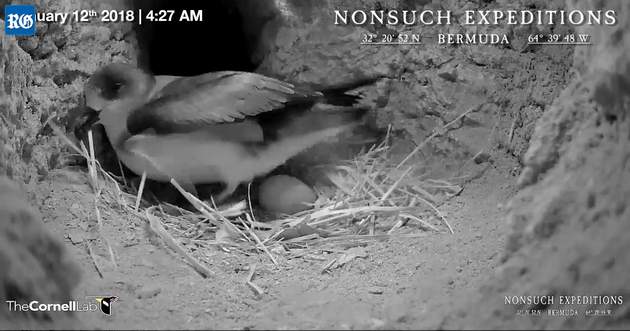Recent News
Amlin donates $10,000 to Bermuda Zoological SocietyWednesday, October 02, 2013
Bermuda Zoological Society has received a $10,000 boost from Amlin Bermuda.
Amlin Donates $10,000 To Coral Reef Research
Wednesday, October 02, 2013
The Bermuda Zoological Society has received a donation from Amlin Bermuda in the amount of $10,000 for their ongoing work in promoting coral reef research and protection.
7 Year Old Boy Rescues Longtail In Distress
Thursday, September 26, 2013
An injured Longtail was taken to safety thanks to a sharp eyed 7-year-old boy who spotted the bird at Horseshoe Bay on Sunday.
Longtime BAMZ volunteer awarded scholarship
Monday, September 16, 2013
This year’s winner of the Steinhoff/Bermuda Zoological Society (BZS) $7,000 scholarship is no stranger to the Aquarium.
Hannah Gibbons Wins Deloitte Scholarship
Friday, September 13, 2013
Deloitte announced Hannah Gibbons as the 2013 Deloitte Scholarship recipient, valued at $15,000 per year for up to two years.
About
GovernanceAbout Us
Newsletter
Latest News
Gift & Bookstore
Contact
General Inquiries
info@bzs.bm
Latest News
All the latest updates and news from the Bermuda Aquarium, Museum, and Zoo, one of Bermuda's leading visitor attractions!
Owain Johnston-Barnes
Published Jan 15, 2018 at 8:00 am (Updated Jan 15, 2018 at 12:20 am)

This year’s cahow breeding season could be a record breaker, experts predicted yesterday.
Two thirds of the 125 known breeding pairs were nursing eggs by Friday.
And viewers of the CahowCam — a livestream of a nest on breeding site Nonsuch Island — were able to watch one of the endangered birds lay its single egg early yesterday morning.
Jean-Pierre Rouja, team leader of conservation group Nonsuch Expeditions, said the egg was laid at about 4.30am and marked the start of the sixth CahowCam season.
Mr Rouja added that the Bermuda team had signed off at 3am, but their partners from US-based Cornell Lab of Ornithology, who are in Hawaii to install a similar camera to track albatrosses, tweeted the event and alerted Bermuda.
Mr Rouja said that last year, with the support of Cornell, the CahowCam reached 600,000 international viewers who watched a total of 8.5 million minutes of footage.
He added: “As we expand the project, including new ways for our viewers and students to engage, we expect to greatly exceed those numbers this season.”
The same pair of cahows has used the filmed nest since 2009.
Jeremy Maderios, government chief conservation officer, said the pair’s egg last year took 51 days to hatch. Male and female birds take turns to care for the egg.
Mr Madeiros said: “After a record-breaking nesting season last year with 61 chicks fledging out to sea, we seem to be on track for breaking even more records this year.”
The majority of incubating adult cahows he had examined were heavier than normal, with some male birds approaching 500 grams.
Mr Madeiros said that suggested the birds had found good feeding conditions north of the Gulf Stream over the last month.
To watch the livestream, visit Nonsuchisland.com.
Anyone interested in updates on the cahows can also sign up for the Nonsuch Expedition Newsletter and select the CahowCam alert option.


